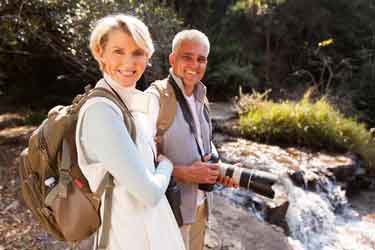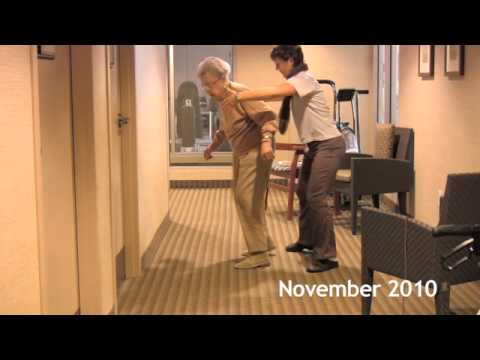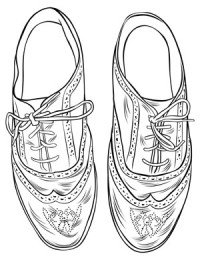Table of Contents
Can a 94 year-young retired animator practice dynamic balance exercises for elderly such as agility ladder exercises for seniors, stepping response, and other agility drills? Are there safe seniors balance exercises that older adults can do to reduce their risk of a fall? In this blog I cover a number of dynamic standing balance exercises for elderly and more.
Dynamic Standing Balance Exercises for Elderly Clients
In the video above, my 94 year old client demonstrates a command of a number of dynamic balance exercises for elderly. The video also shows how her balance has progressed over the years.
For the past few years, I have been fortunate to work with Ms. McLaren (she prefers to be called “Babs”).
The drills required some modification. But she can do them. And Babs has realized significant benefits from practicing the dynamic balance activities for elderly people – most notably her improved balance has made her more steady and confident. It has also given her personal satisfaction in her progress.
Agility Ladder Exercises for Seniors
Ladder drills are popular with professional soccer and football athletes for increasing agility, speed and quickness. The players run down a flat ladder (usually made with rope or tape), and step in and out of the ladder as quickly as they can.
Agility ladder exercises for seniors are a modified version of the athletic drills. They can be categorized as advanced balance exercises for seniors.
These same drills — generally referred to as agility ladder exercises for seniors — can be applied to anyone at any age, including seniors, who wants to improve their dynamic balance.
As we get older, our neuromuscular system (our nerves and muscles) becomes less responsive. Quick changes in direction become more difficult. The ability to catch oneself when falling diminishes over time.
As a result, I encourage all of my clients, regardless of age, to incorporate balance training into their exercise program. I also encourage them to incorporate strength training as it helps them catch their fall, crawl if they end up on the floor, and have the strength to stand up after a fall.
It has probably been a number of years since you have done any balance training. I suspect that if I was to perform an assessment on you, that you might be surprised (and disappointed) by your results from the balance test. Unless we deliberately practice our dynamic balance exercises for elderly, such as agility ladder exercises for seniors, we will lose our ability to maintain our balance.

Exercise Recommendations for Osteoporosis
Exercise is an essential ingredient to bone health. If you have osteoporosis, therapeutic exercise needs to be part of your osteoporosis treatment program.
But what exercises should you do and which ones should you avoid? What exercises build bone and which ones reduce your chance of a fracture? Is Yoga good for your bones? Who should you trust when it comes to exercises for osteoporosis?
A great resource on exercise and osteoporosis is my free, seven day email course called Exercise Recommendations for Osteoporosis. After you provide your email address, you will receive seven consecutive online educational videos on bone health — one lesson each day. You can look at the videos at anytime and as often as you like.

I cover important topics related to osteoporosis exercise including:
- Can exercise reverse osteoporosis?
- Stop the stoop — how to avoid kyphosis and rounded shoulders.
- Key components of an osteoporosis exercise program.
- Key principles of bone building.
- Exercises you should avoid if you have osteoporosis.
- Yoga and osteoporosis — should you practice yoga if you have osteoporosis?
- Core strength and osteoporosis — why is core strength important if you have osteoporosis?
Enter your email address and I will start you on this free course. I do not SPAM or share your email address (or any information) with third parties. You can unsubscribe from my mail list at any time.
Physical Therapy Balance Exercises for Elderly
The stepping response is a balance exercise for elderly used by Physical Therapists when an elderly patients start to lose his or her balance. It is more of a test than an actual exercise.
The Stepping Response
A stepping response is a balance response that occurs when someone steps quickly to adjust from a loss of balance.
Seems simple enough, but if your foot does not step out fast enough either forward, sideways or backward another body part (such as your hand, arm, hip or head) will come in contact with the ground.
This can lead to a bruise, strain, a sprain or, worse, a fracture. One way to improve your stepping response is to practice dynamic standing balance exercises for elderly (described below).

Neuromuscular Combined with Strength Training
The neuromuscular training, such as the agility ladder exercises for seniors in the video, focus on improving the following:
- Movement patterns: As most of us age we have a distinct patterns of movements that we do each day. Challenging that pattern prepares your body for the unexpected.
- Muscular recruitment: When we incorporate agility/balance training we challenge muscles in the front and back of the legs to work together. Torso muscles also work to assist in the balance.
- Dynamic balance during activities and exercise: The ability to maintain balance through movement, is directly impacted and improves.
- Speed and reaction time: The ability of the body or part of the body to move quickly.
Combining strength training with neuromuscular training is a winning combination. Strength training improves a muscles ability to react against gravity.
Fun Balance Exercises for Elderly
There are a number of areas you want to improve as you work on your balance training and there are specific fun balance exercises for elderly that you can do to meet your balance goals:
- Side-to-side stability is very important in the prevention of hip fractures. Lateral, forward and backward stepping drills can improve side-to-side stability.
- Many times a fall can be prevented if the person places their foot behind herself. This will allow her to regain stability. Backwards stepping drills help develop this skill.
Exercise Recommendations for Osteoporosis
Exercise is an essential ingredient to bone health. If you have osteoporosis, therapeutic exercise needs to be part of your osteoporosis treatment program.
But what exercises should you do and which ones should you avoid? What exercises build bone and which ones reduce your chance of a fracture? Is Yoga good for your bones? Who should you trust when it comes to exercises for osteoporosis?
A great resource on exercise and osteoporosis is my free, seven day email course called Exercise Recommendations for Osteoporosis. After you provide your email address, you will receive seven consecutive online educational videos on bone health — one lesson each day. You can look at the videos at anytime and as often as you like.

I cover important topics related to osteoporosis exercise including:
- Can exercise reverse osteoporosis?
- Stop the stoop — how to avoid kyphosis and rounded shoulders.
- Key components of an osteoporosis exercise program.
- Key principles of bone building.
- Exercises you should avoid if you have osteoporosis.
- Yoga and osteoporosis — should you practice yoga if you have osteoporosis?
- Core strength and osteoporosis — why is core strength important if you have osteoporosis?
Enter your email address and I will start you on this free course. I do not SPAM or share your email address (or any information) with third parties. You can unsubscribe from my mail list at any time.
Dynamic Balance Activities for Elderly
Dynamic balance exercises for elderly introduce a new movement pattern for the senior. Many of my clients over the age of 60 require several repeats of a pattern. We start slowly at first and I have them follow along after me. We then gradually increase the pace and complexity of the drill.
Ms. McLaren, because of her advanced age, would generally forget the drill from session to session. While her mind forgot the exercise, her body did not. Each time the drill was introduced, it required less time for her to learn. For example, when presented with an open or closed ladder, Ms. McLaren can recall the basic drills.
Dynamic Balance Activities
The video has the many of the variations of the dynamic standing balance activities for elderly. The type and variety of seniors balance exercises and agility drills you do is only limited by your imagination.
- Suggested Stepping Progressions:
- Forward stepping
- Side or lateral stepping
- Backward stepping
- Forward crossover
- Backward crossover
- Grapevine
- Open Grid/Ladder:
- Starting at the bottom, facing the width of the grid, move: R to L to Forward step; L to R to Forward step
- Starting at the side, facing the length of the grid, move: Step forward into with L/R Sideways step L / R ; backward step L/R; Sideways step L / R ; forward into with L/R etc.
- Starting at the top, back to the width of the grid, move: R to L to Backwards Step; L to R to Backwards Step
- Closed Grid/Ladder:
- Starting at the bottom, facing the width of the grid, move forwards:
- In 2
- Out 2
- In 2
- Out 2
- Lead first with the right foot then repeat leading with the left foot.
- Starting at the bottom, facing the width of the grid, move forwards:
When beginning agility ladder exercises for seniors, start with 2 to 4 drills and once you master these, then introduce new drills.

Dynamic Balance Exercises for Elderly • Conclusion
Now that Babs has greatly increased her balance, agility and confidence (because of her dynamic balance exercises for elderly) she is working on her pass interception skills and rehearsing her post-touchdown ball spike. (Just kidding!)
Go, Babs, go!
Balance Exercises for Seniors Guidelines
For more information, check out my Balance Exercises for Seniors guidelines.

Comments